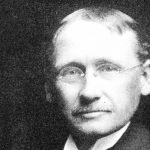Belbin Team Roles explained

Belbin Team Roles: this article explains the team development theory of Belbin Team Roles by Meredith Belbin in a practical way. Next to what this team development theory is including the definition, also the 9 Team roles are explained, the main roles, using them and some highlights on the Belbin test. Enjoy reading!
What are the Belbin Team Roles?
In today’s organizations, working in teams is common practice. Employees have joint tasks and responsibilities that are in keeping with the organizational objectives. The group dynamics of working in a team lies in the potential of competences and skills that each team member brings to the team.
Meredith Belbin had studied this insight and its relationship for years before he arrived at the definitions of the team roles; the Belbin Team Roles.
This British academic has mainly looked at the degree of effectiveness of management teams the moment they started working in team roles. The Belbin Team Roles he has developed is called ‘The Belbin Team Role Self-Perception Inventory (BTRSPI)’.
These Team Roles goes beyond a psychological test and especially maps out useful and verifiable information that functions as input for one of the most important factors, namely that of expected behaviour. Eventually, Meredith Belbin defined nine types of team roles after having done much research since the 1970s.
Definition of the Belbin Team Roles
The Belbin Team Roles describe the behaviour of team members that can be recognized when they are cooperating with other team members. When forming a team, the Belbin team roles is a useful instrument to analyse the different personality types and to arrive at a successful cooperation by means of clever combinations. It is important that people work together on a complementary basis so that they can strengthen, improve and complement one another.
Belbin Team Roles: Nine Team Roles
Below you will find a brief description of the Belbin Team Roles that Meredith Belbin and his staff defined after years of in-depth study.
1. Co-ordinators (CO)
Co-ordinators naturally have the urge and attitude to coordinate by continuously denominating the procedures, clarifying the intended goals and ensuring that everyone is working towards the right direction.
The strength of co-ordinators can be found in their behaviour; quiet, tolerant, positive, broad-minded and curious. They need togetherness, cooperation, procedures and anticipated results.
Points for consideration for co-ordinators are: manipulative behaviour with respect to the anticipated results and delegating work too easily (because of vision empowerment).
2. Resource investigators (RI)
Resource investigators are extrovert, adventurous and enthusiastic. The strengths of resource investigators are their networking skills, being open and always exploring new chances and opportunities.
They need innovation, relation management and diversity. Points for consideration for resource investigators are: focus and vision, leaving jobs half done and acting nonchalantly.
3. Plants (PL)
Plants are introverted and operate by themselves in a philosophical manner. The strengths of the plants are creativity, innovativeness and solving complex problems.
They need recognition, space for creativity and a calm environment. Points for consideration for plants are: not thinking realistically, thinking a lot but doing very little and deviating from protocol.
4. Monitor evaluators (ME)
Monitor Evaluators are sensible, cautious and critical. Their strengths are caution, analytical ability and being able to ask follow-up questions in order to arrive at the right solution.
They often have a helicopter view, are strategic and think things over carefully with respect to their possible impact before they make a decision. They need insight, overview and the space and possibilities to understand matters. Points for consideration are: detachment and acting contemplatively because of over analysing.
5. Shapers (SH)
Shapers are driven, passionate and energetic and they have a need for achievement. They are constantly looking for a challenge and they know how to get people moving.
The strengths of the shapers lie in their enthusiasm, will power and focus. They do not have problems dealing with conflicts. They need pressure and incentives, competition, clarity and goals. Points for consideration for the shapers are: intolerant behaviour towards people without ambition and catching other people off-guard.
6. Implementers (IMP)
Implementers are practical organizers. In addition to being hard workers, they have common sense, are well-organized, realistic, competent and task-oriented.
They need clear expectations, agreements and regularity. Points for consideration for the implementers are: flexibility, conservativeness, predictability and ‘fact-based’ evidence.
7. Completer finishers (CF)
Completer finishers have a talent to assess people on what could go right or wrong. Details, control and perfectionism are associated with this. The strengths of the completer finishers lie in their accuracy, concern and involvement and the need for perfectionism.
They need safety, quality and a certain amount of security. Points for consideration for the completer finishers are: seeing too many barriers sometimes, having difficulty letting things go and discouragement.
8. Team workers (TW)
Team workers are cooperative and considerate. They are the most sensitive people and they are purposefully looking for the mutual connection.
The strengths of the team workers lie in their tactful actions, involvement and social skills. They need togetherness and commitment, space for deepening of personal interests and sharing this.
Points for consideration for the team workers are: conflict and confrontation avoidance, finding it hard to make decisions in crunch situations because of social interests.
9. Specialists (SP)
Specialists are driven by content and expertise and they act individually. The strengths of the specialists are the quiet and firm attitude that leads to acquiring knowledge or deepening of the subject matter.
They need space and freedom to acquire knowledge or subject matters. Points for consideration are: defensive behaviour, self-willedness based on acquired knowledge and limited involvement in a team (individualist).
Main Roles of the Belbin Team Roles
The nine defined Belbin Team Roles can be categorized into three different main roles, namely:
Action-oriented Roles
These are about doing. These Team Roles can be allocated to the Complete Finishers (CF)/ Implementers (IMP) and Shapers (SH).
Social Roles
These are about the people and their team role in the team. These team roles can be allocated to the Co-ordinators (CO), Resource Investigators (RI) and Team workers (TW).
Thinking Roles
These are about monitoring, content and creativity. These team roles can be allocated to the Specialists (SP), Monitor Evaluators (ME) and Plants (PL).
Using the Belbin Team Roles instrument
Now that the Belbin team roles are known, this instrument can be used in different ways.
One can determine a desired balance for a new project or make an analysis of the current team to identify personality types, the people oriented roles and the talents. This can also be used to identify the personal development areas in order to take a team to a higher level.
Another method is evaluating team performance by using team roles. Here are some additional tips to use the team roles theory:
- Use the Belbin Team Roles to analyse a team and the results to: a. manage strengths and b. improve weaknesses.
- A team role does not necessarily have to apply to one person because a person can also have several roles. It is about clarifying the strengths and weaknesses so that they can be balanced in the right way.
- Use the Belbin Team Roles to understand the team. This is how you can prevent decisions that could be wrong and possible conflicts.
- Use the Belbin Team Roles to compare self-perception and the perception of others. This will result in productive discussions that lead to new insights.
Belbin Team Roles test
The company Belbin made up a free test that contains to parts, the Self-Perception Inventory (SPI) and the Observer Assessments. When you complete their SPI online, wou wille receive a personal Belbin Report based on your input. With the SPI, you then can request feedback from i.e. direct and indirect colleagues which will fill your Observer Assessment, for free.
It’s Your Turn
What do you think? Is the Belbin Team Roles instrument applicable in today’s modern companies? Do you recognize the practical explanation above or do you have more suggestions? What are your success factors for using the Belbin Team Roles instrument?
Share your experience and knowledge in the comments box below.
More information
- Belbin, R. M. (2012). Team roles at work. Routledge.
- Belbin, R. M. (1993). A reply to the Belbin Team‐Role Self‐Perception Inventory by Furnham, Steele and Pendleton. Journal of Occupational and Organizational Psychology, 66(3), 259-260.
- Belbin, R. M. (1985). Management Teams: why they succeed or fail. Bulletin of the British Psychological Society, 38, A1-A1.
How to cite this article:
Mulder, P. (2012). Belbin Team Roles. Retrieved [insert date] from Toolshero: https://www.toolshero.com/leadership/belbin-team-roles/
Published on: 04/04/2012 | Last update: 04/17/2023
Add a link to this page on your website:
<a href=”https://www.toolshero.com/leadership/belbin-team-roles/”>Toolshero: Belbin Team Roles</a>













One response to “Belbin Team Roles explained”
Everything is very open with a clear explanation of the challenges.
It was really informative. Your website is very helpful.
Thanks for sharing!